How do you avoid the expense – and intrusiveness – of a new car? The answer is simple: By not buying one! Of course, that begs the question about what other kind of car you ought to get.
And keep – if you already have one.
Makes and models matter less these days than years – in that pretty much all makes and models built since the early 2000s are (in general) more durable and reliable than the best-made cars were prior to then. Consider the fact that the age of the average daily-driven vehicle is now almost 13 years old. Thirty years ago, a thirteen-year-old car was considered an old car approaching the end of its useful life and was typically driven by a teenager as a hand-me-down or a first car by someone who couldn’t afford a new car just yet.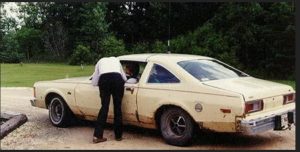
Today, lots of people can’t afford a new car – or don’t want one. That is part of the reason why so many people are driving “old” cars.
But which old cars are the right cars – if you want to avoid a car with all the things that have made so many people not want them, such as “advanced driver assistance technologies” and the attendant creepy “connectedness” that could lead to being disconnected by the government-corporate octopus, when the latter decides your “carbon footprint” is too big – or as punishment for not “masking up”?
Most of the worst that has come to define new cars dates back only about a decade or so. It was around 2013 that high-end luxury cars began to boast “connectedness” and things like “advanced driver assistance technologies” such as Lane Keep Assist, Automatic Emergency Braking and similar. Also smartphone-emulating LCD touchscreens rather than the horribly old-fashioned buttons, knobs and switches that don’t require you taking your eyes off the road to operate them. LCD touchscreens and all the rest of the foregoing are now unavoidable even in “entry level” cars (there is no longer such a thing as an economy car).
Also such annoyances as ASS – automated stop-start “technology” that automatically shuts off the engine at every red light and back-up cameras that automatically come on when you put the car in Reverse – and automatically turn down (or turn off) whatever you were listening to on the radio – for “safety.”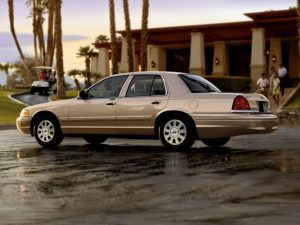
And overtaxed, under-sized engines with turbos bolted to them to make up for the power they would otherwise lack. At the cost of the repairs you’ll inevitably be paying for.
But if you go back about a decade – and avoid high-end luxury car brands – you can avoid most if not all of it. Go back another five years, to circa the early-to-mid-2000s and you’ll find cars that are still just cars (and trucks) rather than very heavy smartphones with all the personality of the same.
Many will have a V6; some will have V8s.
These “old” cars – and trucks – are also (and incongruously) likely to be more durable and long-haul reliable than new cars and trucks, because their engines are V6s and V8s. And because they aren’t turbocharged, direct-injected and under-sized for the application (as almost all new cars and truck engines are). Also because the only computer they have is the one that control the fuel-injection and ignition system. The air conditioning controls and accessory controls are usually or at least commonly controlled via simple electric switches and even mechanical connections that operate independently of the hive mind.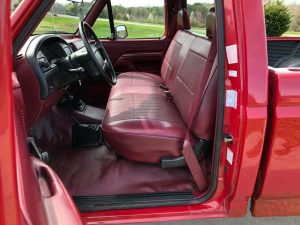
It is also much easier to find an old vehicle with a manual transmission, an entirely mechanical device with no electronic controls to fail or “throw” inscrutable “codes.”
These almost always last much longer than electronically controlled automatics and – unlike modern electronically controlled automatics – are rebuildable at a cost that makes the job worth doing. As opposed to the cost of replacing a modern electronically controlled automatic transmission, which is often not worth replacing because the cost of the new transmission amounts to a third-to-half the value of the vehicle.
And that gets us to what may be the chief virtue of these older cars (and trucks). Which is that they are repairable.
And worth repairing.
I’ll use my own old truck – a 2002 Nissan Frontier – as a case-in-point. It has a simple four cylinder engine that is not direct-injected or turbocharged. It is not very powerful or especially fuel-efficient but it is not much different in its basic layout than much older engines in that it does not have elaborate “technology” governing it; just a computer to operate the fuel injection system and ignition. Otherwise, it’s a mechanical device – including the throttle, which is controlled by a cable. An engine such as this one can run reliably for 250,000 miles or more and can be rebuilt at a cost that makes it worth doing that. The manual transmission has a clutch that will last for 150,000 miles or more if you don’t ride it – and it can be replaced for a couple hundred bucks, by you (if you can do basic mechanical work such as a brake job; the two jobs being similar).
And that’s pretty much all there is to it.
The truck has leaf springs and a solid axle rear suspension; they will last 30-plus years. Up front, coil springs (not McPherson struts) and shocks and your basic tie-rods and related linkages – all simple and durable parts.
The rest is just metal and plastic. These rust and crack, of course. But they can also be fixed as needed and for a lot less than a new car payment – for a car (or truck) that is “connected” and that can be disconnected and that probably won’t run reliably for half as long as the average “old” car (or truck) that’s still in use already has.
. . .
If you like what you’ve found here please consider supporting EPautos.
We depend on you to keep the wheels turning!
Our donate button is here.
If you prefer not to use PayPal, our mailing address is:
EPautos
721 Hummingbird Lane SE
Copper Hill, VA 24079
PS: Get an EPautos magnet or sticker or coaster in return for a $20 or more one-time donation or a $10 or more monthly recurring donation. (Please be sure to tell us you want a magnet or sticker or coaster – and also, provide an address, so we know where to mail the thing!)
If you like items like the Keeeeeeeeev! t shirt pictured below, you can find that and more at the EPautos store!



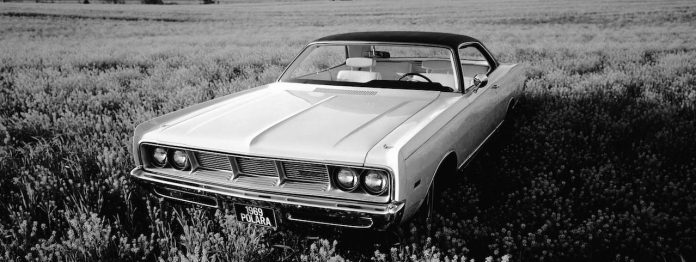

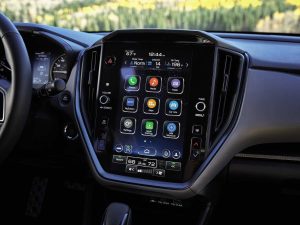






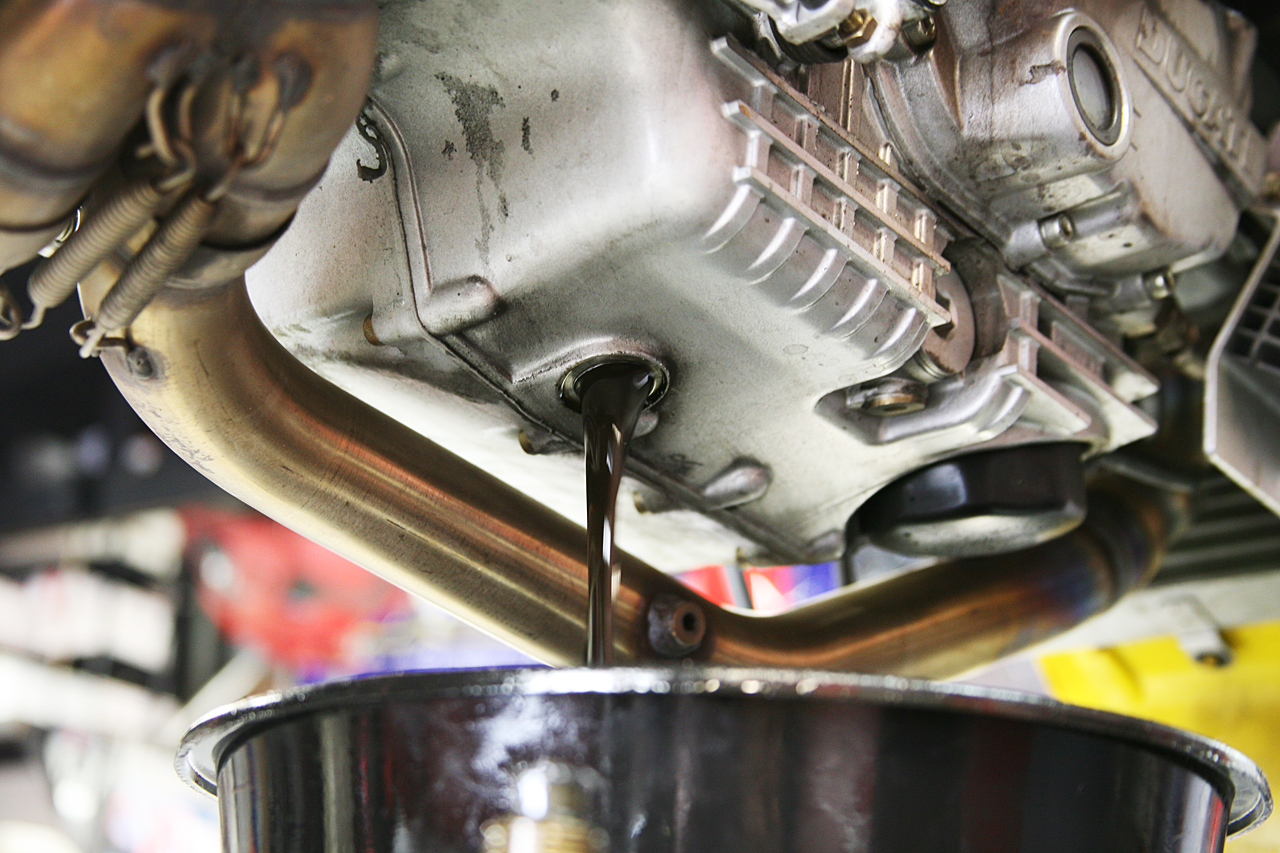
“I’ll use my own old truck – a 2002”
You make me laugh Eric, a 2002 is NOT old. I’ve never owned a car that new. Something from before fuel injection is what is old these days, anything with a carb is old. And you don’t see many on the road these days.
The topic of this article was much discussed in my neck of the woods, we would pose the question, if you could own only one car, what would it be if the economy collapsed or nuclear war? The obvious advantage of the carb comes up, it won’t be fried by the EMP. But fuel injection is far more reliable. The best car is the one you can keep running, get parts, gets good fuel economy.
If things became like Mel Gibson road warrior movie Mad Max, are you sure you want to drive when roving gangs rule the highways? Anyone with a running car will be a tempting target. The last Mad Max movie is awesome. In the end times, men fight over the last drop of fuel – because a car is so much better than a mule or a horse.
You can laugh if you want, the ultimate vehicle is the bicycle, as it is extremely simple, easy to maintain, and doesn’t use any gas. And you can easily travel 20 miles which is a huge improvement over walking 20 miles. Even if everything gets blown to smithereens, all those roads we built will be there for centuries – and with a bike – you can walk it around the bomb craters in the road.
I used to live on a bike and I did stealth camping for years. I would carry the bike off the road into the woods – so no one knew where I was camping. I would carry the bike across the ditch then walk it down a path to camp. That works, and you will still have you bike in the morning as the thieves can not find it. The bicycle and the laptop are the two greatest inventions of all time.
But back to reality, the economy never collapses, it just gets worse as things keep getting inflated out of sight. Trucks didn’t go away, they just got really expensive. Gas out west is $5 a gallon. What is really happening is that we are being priced out of vehicles and their fuel. We are being pushed into poverty by stealth – the hidden forces of inflation – that we can not see and can’t fight.
What is actually happening is out of control deficit spending, and Fed monetization of debt, is causing high inflation, which is impoverishing many people. So when that dweeb Klaus Schwab says you will own nothing, he is simply projecting the inflation trend into the future, unless you are a millionaire, you will not be able to afford hardly anything.
Zero Hedge published an interesting article this week, I’m Not F**king Eating Bugs: A Manifesto. The economy never collapses, what happens is everything is inflated out of reach. Those well connected still get to fly, buy cars, etc. Those who do not comply are marginalized and forced into poverty and survival mode.
Good points, all. But the purpose of American life is not to live like some Third World peasant with all his possessions on a bicycle, squatting in a tent unseen on someone else’s property. The purpose of American life is to live well and to be free to figure out how to best do that. Bicycles existed before Henry Ford’s Model T. So did horses and mules. So did pioneers and bums and drifters living in tents and shacks. People abandoned that stuff as soon as something better became available.
Now the government is trying to tell us what we do or do not “need.” You’re right, of course — nobody “needs” anything more than a bicycle. Hell, man evolved to be able to walk on two legs, he doesn’t even “need” that. Billions of people have existed throughout history without even a bicycle, walking everywhere they went their entire lives.
In Mao’s China, the peasants had bicycles and considered themselves lucky to have them. That’s not the American Way, though. Or at least it hasn’t been the American Way until now.
I agree, we should all live well and in comfort. What is the point in suffering? There is no point to suffer, so we all should live well.
But the owners have a different view, they want us all impoverished, and their policies are doing just that.
Because the system is being unglued, inflation, uncontrolled immigration, super high housing costs, car prices through the roof, the people are being pushed out of their comfort zone which IMO is why Trump is doing so well, they want things the way they were, thus MAGA sells.
Trump is being put away, I can not help but think that just before Hitler came to power he was jailed.
‘Up front, coil springs’ — eric
Nissan Frontiers from 1998 to 2004 have torsion bars rather than coils. Thought about upgrading mine to stiffer aftermarket ones:
https://ruggedrocksoffroad.com/19982004-d22-frontier-torsion-bars-c-40_1317_1180.html
Love that lead B&W photo of a 1969 Dodge Polara. That was more than half a century ago … when cars were designed l-o-o-n-g, with lots of front and rear overhang. The design aesthetic required it, and it massively succeeded … without weighing three tons, or even two.
During the 1930s Depression, when labor was essentially free, many things were built or manufactured which subsequently became impossible, when normal wages were restored.
Likewise, vehicles during the 1960s benefited from a laissez-faire regulatory environment that is long gone. 1969 — before the 1973 oil shock– was a fine year for cars, as was 1968 and 1967.
So take me down to your dance floor
I won’t mind the people if they stare
Paint a different color on your front door
And tomorrow we will still be there
— Gram Parsons, A Song For You (1969)
I like that Polara, I had one with a 383 and auto. Loved its solidness.
Hi t05,
Me also – in re the Polara. The “pillarless” look has always appealed to me and I really like the “fuselage” styling of early ’70s Mopars.
That’s what drew me to the body style of the 3rd gen Charger. The body lines are like that of a slender woman, if you ask me.
Here’s a pic of my all stock 71 with a 440:
https://ibb.co/86DJ4tF
Beautiful car, Philo!
I have mentioned the ’71 GTX a high school buddy of mine had (also a 440 car). It was bronze metallic with Hurst mags. First automatic car I ever drove that barked the tires on the 1-2 upshift.
Stock.
Thanks Eric!
The 71 GTX and Charger were pretty much the same car underneath. A lot of one year only features. One of my favorites is the machine gun exhaust tips cut out of the rear valance. I don’t know why they stopped doing that!
That 727 Torqueflite is a beast. Shifts very tight and quick. It makes the slap stick shifter fun (still not as fun as a manual).
The car is a time capsule:
https://ibb.co/RgBhVHQ
It might be worth getting an old car in decent shape & doing a frame up restore on it. Wa-la, a new car.
New engine & tranny with it will bring your bill to around $50,000 to have it done though, or several years in the garage after work hours and half that price.
The One That Got Away
Several years ago I had a shot at a Crown Vic Police Package from local GovCo. It spent its life in the Planning and Zoning Department. ~50k miles…
Oregon and Utah Announce Mandated GPS Trackers in Electric Vehicles To Tax Drivers per Mile Driven
https://www.msn.com/en-US/news/scienceandtechnology/oregon-and-utah-announce-mandated-gps-trackers-in-electric-vehicles-to-tax-drivers-per-mile-driven/ar-AA1fsvR8
‘Utah, however, has gone a step further by mandating GPS trackers for every EV.’ — msn
That’s a hard no for driving an EeeVee.
Why not an option to pay a flat fee, based on a nominal 10,000 to 12,000 miles a year?
Because spies gonna spy. Especially in Utah, which hosts a gigantic NSA facility that stores all our illegally monitored electronic communications.
Fuck the NSA, fuck EeeVees, and fuck Utah.
Hi X,
What will people who bought EVs in those states to virtue signal about how they CARE for the environment do when told they’re REQUIRED to install a GPS tracker for the purpose of being taxed by the mile? And with the Biden administration the way they are, I don’t doubt that they’d LOVE to impose such mandates NATIONWIDE.
Wow, that sucks, Big Brother as your passenger. Here they record your mileage when you get the saaaaaaafety inspection so they could add that onto the inspection fee easily, not to give them any ideas. Maybe GovCo is looking for a steady cash flow rather than a big lump sum; of course paying it out monthly disguises how much you’re actually paying, a feature not a bug.
At 37:32 in video…Magnus Walker says……
Cars bring people together from all walks of life, it is the great equalizer of this shared common bond of a passion, for something that trance-sends a vehicle that takes you from A to B.
https://www.youtube.com/watch?v=n1bYxLrkpZc
We have a menagerie of older vehicles. My wife has a 4Runner with 180K and it runs like a top. I have a 4th gen Supra Turbo with 180k or so on it (it is immaculate), a 2015 Infiniti that I bought off-lease and a 2010 Tundra that I bought as a pandemic lockdown project that I turned into a TRD Pro with a 40k discount. It has 200k plus now and I drive it everywhere.
My son has a 250k first-gen Sequoia and it still runs great.
I think any pre-turbo Accords, Camrys or Panther bodies (Crown Vic/Grand Marquis) are marvelous machines that will last for decades with care. Truck-wise, you can’t go wrong with a Toyota.
I hate car notes and I definitely wouldn’t pay for one of these Uncle-designed monstrosities that won’t last like the older metal.
I drive older stuff and live in Va where the love brine and salt…I learned to use wool wax…Its a messy job but it works…even took the bed off my 08 Ranger FX4 so I could douse the undercarriage with the stuff …..no rust so far.
Continuing on the theme, can anyone list the newest cars/trucks that don’t have any electronics that could be destroyed by an EMP? I figure that will be a strategy to disable autos at some point in the future. I figure they will have some sort of “gun” that can be aimed to blast out the solid state components in a car. I think it’s been the 90’s since a vehicle had no solid state controls. Cap and rotor baby!
Mid ’80s diesel would be my go to. Beware, though. My backup is a gas ’88 Dodge Ram 3/4 4×4, and there are an astounding number of parts that are only available via vintage car suppliers.
Hi Steve,
In re diesels: I am hoping I can wrangle a ’90s-era Toyota Hi-Lux diesel with a manual. I know of a source for these if anyone’s interested; private mail me and I’ll give details.
Hi Easy,
If the vehicle has electronic ignition (and fuel control) those may be rendered inoperative by an EMP. But – good news – many of the older vehicles can be retrofitted to mechanical fuel delivery and popping in a new points-type distributor can often be done, too, with few if any significant mods. For example, I could drop in an early points-type ignition in place of the HEI type that came from the factory with my ’76 TA – and I can replace the factory EFI system that came with my ’02 Nissan with a wet-flow manifold/carb set-up.
The 90s era Chevy 3.1L V6 in my Lumina had an ignition block and EFI. But the block still had the hole for a distrubutor system. I know because the plug they used began to profusely leak oil at about 125K miles. My mechanic, who had just replaced one on his daughter’s car, refused to do it. Apparently you have to tear the engine down to get to it. The seal is just a 50 cent o-ring of course, but by the time you’re done with all the labor, replacment head and manfold gaskets, etc you’re getting close to the bluebook value of the car.
Only modern car worth buying is the current 4runner, soon to be replace Taco and Mazda 3’s/CX5/50’s (no ass, simplistic) as well
Sister now needs a new car, so it’s either that, or if she doesn’t mind slightly preowned, the other (Mazda or Toyota). Nothing else compares, Bronco Sports are meh for the price (1.5 3banger or 4banger thats higher up price wise), Honda Passport might get a pass but it has A.S.S., Lesbaru has CVT’s as she doesn’t know stick, only Jeep I’d consider for simplicity is GC, and what else is there that fits the bill.
Sports and Muscle cars are a different story, but even then, previous gen models fit the bill like 1st Gen Toyobaru’s and S197s
Buy a Mk 3 VW GTI. It is a great car car to drive, very underrated. Jeremy Clarkson said, no matter what type of car you want…buy a Golf. The GTI was rated one of the best cars in the world at any price. The Mk 3 VW GTI had no recalls and no problem areas.
The Mk 3 VW GTI wasn’t a favorite, it is not collectible yet, so is cheap to buy, the same is true of the Mk4 Golf, but it has the advantage of being galvanized. The Mk1 and Mk2 VW are collectible now so are too expensive now. These cars were available as diesels too which gave better fuel economy and lasted even longer then the gas engines.
The MK3 GTI came with the 2.0 litre na engine which is almost unbreakable and is low maintenance. These cars are very simple and easy to work on and the parts are easy to find and usually cheap.
For something more sporty but still practical, buy a Porsche 924 or 944, which are simple, analog cars compared to the new cars in 2023.
The E30 BMW’s are also great cars, but are too expensive now.
1. Decide what PLEASES you. No point in putting money and effort if your “heart ain’t in it”, because keegan old ride going IS a labor of love.
2. Maintainability- either you can do most of the “wrenching” or you can’t. And if the latter, not only will it cost, good luck finding someone that knows what they’re doing. Most “mechanics” hook up that OBD-II reader and see what codes it “throws”, then proceed IAW a manual and/or an online app. Show ’em a distributor that uses points and they’ll look at you like you’re Fred Flintstone.
3. Parts. Accumulate. A lot. Because what’s cheap and obtainable now probably won’t be soon, especially once the control freaks outlaw DIY. Fuck ’em.
Right….go and try to find someone to rebuild a weber carburetor today….good luck with that. Luckily I can do it myself.
I can rebuild most carburetors while blitzed. There’s a reason I’m certain of that.
Re-built a carburetor at 19 years of age, just follow the numerical order, can’t go wrong, it’ll work. Not a difficult job.
Carb cleaner is essential. Dip the parts into the bucket, use the strainer, good to go.
Long time ago now, ain’t there anymore.
Hi Aanon,
It’s not such a bad thing to have to acquire skills. The upside to carbs is that while it does take some skill to tear them down, it is not something beyond the ken of anyone with a little patience and some basic mechanical aptitude. No special/expensive tools are needed (usually) and the really nice thing about carbs is how inexpensive they are to keep going for decades, if you have a couple spare rebuilds kits and know how to rebuild them!
Absolutely! The key is following directions and know some pitfalls, such as “why is my Quadrajet bowl going empty overnight?” – time to reseal those passage plugs on the underside of the carb body.
“Why is my Carter AFB chugging when cold / choke on?” – you didn’t follow the automatic choke setup per the book.
What I liked about the Quadrajet was the screw adjustable choke vacuum pull off. Start with the factory setup then fine tune over several morning cold starts.
Americans will be buying cars from Cuba when there is nothing else that can be done. har
There are cars on dealership used car lots that are not expensive. Can’t haul sheetrock, but 5000 dollars will get you some wheels. The cars are in Fort Collins and Loveland out there in Colorado where you can get an Altitude Adjustment. Nobody wants them, too old and aren’t desirable automobiles. Everybody wants something newer if they can have it.
Bought a Volvo, should work out okay, it isn’t new. Needed another vehicle to solve a problem, dead engine, the Volvo was for sale, bought it, it’s mine.
Klaus can’t have it and if he tries, he is going to get bloodied. Same for John Kerry, bloody the bloke, freaking idiot. They’re greedy wretched fools who have no clue. No hope for those goons. You don’t want them around, get lost.
I need an altitude adjustment
Higher and higher ’til I feel nothin’
I want to feel just like John Denver
I need an altitude adjustment – Midland, Altitude Adjustment
Or something like that.
Much easier to maintain if you have some skillls too. At least if you have the space to work on a vehicle. Tools are pretty cheap these days, at least if you’re willing to accept Harbor Freight quality for something that will be used occasionally. Back in the day it was probably more common for friends, neighbors and family members to share tools or have skills you might not. But with reliablity comes loss of knowledge. Even brakes will last years, so even if you have the skills needed you’re not exercising the muscles often enough and more likely to make a mistake or forget that one key component.
And then there’s the common practice of manufacturer working against the shade tree mechanics by introducing oddball fasteners like a T70 torx bolt where a normal hex head would have been fine. Nothing brings a project to an end like not having the right tool, then having to wait for Amazon “two day” shipping. At least these days you can get it. And things like crush washers that can’t be reused.
Sure, none of that stuff on it’s own is enough to just take it to the shop, but it all adds up. Especially for those of us who might not be super organized, so now we get to spend an extra 3 hours looking for the damn torx bit that we put away right in that spot where we knew we’d have it when we needed it… except it isn’t there! Until we see that it was right in front of our faces!
(old just sucks…)
Since I like having cars with a quiet ride, long highway legs, precise handling, easy maintenance and reasonable fuel consumption, the vehicles I like to drive are mid 2000’s (or thereabouts) Honda products.
My primary car is a Honda Pilot with 237k miles. It has had the entire suspension gone through, regular transmission fluid replacements, oil changes and other checkups. It stays in top running shape.
My second car is a 2012 Acura TL. Excellent car with precise handling and a taught ride. It too gets top notch treatment. With 204k miles, it is able to handle the road with little issues. It’s only drawback is the outward visibility brought to you by the National Highway Traffic Safety Administration FMVSS 204 and FMVSS 208.
I plan on staying in Texas or Oklahoma, so rust won’t be an issue for me.
Will advocate for two cars nobody wants but are reliable. Both are Toyotas:
1) 2011 Sienna. Yeah, we all hate minivans. That’s why they are good deals for families. This particular one, particularly the lowly SE, has the 3.5 V6, FWD. Mine has 325K and the only repairs, other than brakes and tires, was the seat tracks for the driver’s chair. So far it has survived salty winters well.
2) First generation Venza. Our 2012 has 250K, and it also has the V6 but AWD, a fully loaded wife’s car (white) that my kids drive now. Huge panoramic sunroof still works, no problems at all. Basically it is a lifted Camry.
Both of these are likely unwanted, boring cars people don’t care about. Otherwise I still want a ’71 AMX w/ the 401.
All great cars. How easy are the Venza and Sienna to work on? The problem I have had with Toyota products is that they are difficult to do basic maintenance, based on my experience with a Lexus RX350 and even my original ES300.
You have a GOOD point, they suck to work on. Conversely, you do not work on them hardly at all. Trick is to use iridium plugs so you only change them 1-2 times. Toyota hates shade-tree mechanics. Regular stuff is good, V6 has a very good timing chain. If you want easy maintenance on a Toyo, always go for the 4-bangers. They last as long maybe longer, but the Sienna did not have a 4-cyl option.
I’m surprised you’d say that. That is the one area I have to give Toyota kudos.
My wife had a 2000 Camry. It had all sorts of front end problems, and we got rid of it in less than 2 years. But I found it very easy to work on by 2000 model year standards.
My oldest has a 2008 Scion TC. It is even easier to work on. It is a very simple car in design, and everything is very accessible. Even changing transmission fluid is as simple as changing oil. Toyota should have named this car the “Almost”. It’s almost a great car. It could have been the “practical Miata”. It has the 2.4L from the Camry that has the crappy rings and burns oil like it was gas. As long as you top it off we’ve had no other mechanical issues. Interior and other trim is cheap plastic. The carpet is thin and very low quality. The automatic has no overdrive, so you’ll be turning 3000 RPM at 70MPH. Small stuff like that.
I would recommend a first gen TC as a “what to get” car provided you:
1) GET. THE. MANUAL. TRANSMISSION.
2) Avoid the years that have the ring issue, or get proof that the engine was rebuilt right.
It’s the rear bank of the V6 that’s miserable. Intake removal, digging into the wiper box, depending on what car we’re speaking of. The 4’s are so much better. My ’86 Daytona looked like stuff had been stolen out of the engine bay in comparison.
Lol Yeah. That rear bank is miserable. Took me 7 hours to change the spark plugs and the valve cover. Still ended up taking it to my friends at Sal’s Auto Repair in Oklahoma for that rear job. They were nice enough to only charge me 300 bucks. I got off easy.
The 2000 Camrys as long as they were 4 cylinder models were probably okay. I can’t speak for the V6. I had a Lexus ES300. It was pretty easy except for the plugs. That’s an all day thing for a shade tree wrencher as you have to take off the air intake. Need swivel wrenches.
The 3.0 and 3.3 L V6s also have non adjustable valves. When you start hearing them tick, you are having to replace the entire head. There is no practical way to find the offending valve. I got rid of mine because I couldn’t take the noise.
When Toyota went to the 3.5L V6, things got complex. And although it seems like a very well built engine, the timing chain drives the water pump on those, so when the water pump fails, it becomes expensive. Other things that are difficult on that motor are replacing the drive belt tensioner. You practically have to remove the entire front suspension to get to it, at least on the RX350. Probably the same on the other Lexi or the Avalons as well.
This is why I chose Hondas to replace the car. Much easier to work on and almost as “reliable.”
Wow, this is a keeper. I learned a few rules of the road when it comes to thinking about a newISH car.
Hey, did anyone else hear Trump talk about the problems associated with eeevees on Tucker? He didn’t speak of the fire hazard, but the obvious problems of range and charging. Stunning.
That’s probably the most sensible thing that the Orange Man has said in a while. I wish he would have rescinded the CAFE standards in effect while he was in office. Kept them at the 2016 levels. He actually raised above what they already were. Should have kept them at 35.5 mpg. Let the car makers figure it out.
Great article Eric. It would be nice to explore this topic more. I have a 2009 Mercury Grand Marquis. It has 305,000 miles and looks and runs like new. Being a stickler about maintenance has helped her achieve such mileage. When her engine or transmission does wear out I’m going to replace it. As a back up vehicle I have a 1979 F150 with a 300-6 and a manual transmission. I have restored it to like new condition. As a back up to the back up there is my 71 Olds 442 convertible. Could you do a series that takes this topic into greater depth? Maybe a “how to” guide on keeping our old gems on the road. Surely, there are those who would benefit greatly from this!
Thanks, Gray!
I agree; this topic is . . . topical and for that reason well worth diving deep into.
Panther bodies like your Grand Marquis are marvelous cars! Well-built, great ride and engines that can handle mods if you like and are more than adequate if you don’t. There’s a reason why cops and taxi drivers trusted them for decades. And the aftermarket on those cars is unbelievable.
Most definitely! The ol’ Mercury is bone stock in its drivetrain. I have upgraded the suspension with urethane bushings, big sway bars, and KYB shocks/struts. She handles way better than a car like that should.
Husband and I have been on the look out for an old truck for a year now. Somewhere between late 90s-early 2000s. The prices on these are unreal and they go really fast. I guess lots of people have the same idea with not wanting the modern garbage vehicle, not to mention the new car price tag. We just want an old truck to drive as a second vehicle around town. The price is a hard pill to swallow though knowing before the scamdemic they were much less. Late 90s Ford pickups going for $15k-$20k. Yikes. I’m not hopeful they will come down in price anytime soon so we may have to bite the bullet.
Give heavy consideration to F15’s from 1970-1985. They are simple and reliable. They can be found in fair condition for reasonable prices and can be restored by you with parts from the LMC Truck catalog, Rock Auto, and a maybe a junkyard or two nearby. I bought my ruck for $1200. I’ve spent $10-12K on it and it is like new now. I put a custon flatbed on mine since the original bed was rough. It’s a real head turner and gets lots of compliments. It’s an ox of a truck.
“Confederate Gray,” you are presumably a Southerner and do not live where winter road salt destroys vehicles. It is simply not possible to drive a car for 30-40 years in the salt, even if you undercoat it.
Cars today are more rust-resistant than they used to be, a new car today will probably last 12-15 years in the salt before it is junk. In the past they were rotted out in 7-10 years. But it is not possible to find a 1985 F-150 that has been used as a daily driver in the North. You might get lucky and find one where some guy died and his widow left it parked in a barn for 25 years. You might get lucky and find a car that isn’t rotted from some retiree or snowbird who simply never drove it, or never drove it much, in the winter. Even those tend to have more incipient rust than is desirable though.
Of course, if you do manage to score an older car that isn’t rotted and start using it for a daily driver yourself, it will begin to rot out from you using it. So that is only a temporary solution.
The idea that we can ALL just go out and find an old car without the modern bullshit on it and keep it running indefinitely like in Cuba is not possible north of the Mason-Dixon line. There are areas on the Northwest like Washington and Oregon where cars do not rot, of course, but in the Northeast and Midwest, forget it.
Yep, I’m a southerner. A Tennessean. It is sad that Yankeedom is such a pitiful place. I did not take the salty roads into consideration. We do get some snows every winter and they spray the roads. I’m very diligent about cleaning the undercarriage afterwards.
I’m a Confederate way up in enemy territory. We never expect cars up here to last much, which is why we always go down and steal your used cars.
There are many rural areas of the north that I like. I’ve even become more tolerable of their inhabitants. But damn, that yankee accent is hard on the ears!
Also, my advice to MScott about the pickup was not for a daily driver but for a back up vehicle as she stated. While I did not consider those salty northern roads, my advice is applicable to a large section of the nation and hence, to many of us that frequent this site.
Learn to weld, wash it every 3 days if in salt, yearly coat the underside with cosmoline. Ive kept a 1986 k5 blazer going in chicago for 14 years. Looks like a Frankenstein truck since ive added about 100lbs of steel in various places, but once its all done, its not hard to keep up. I dont use bondo, so weld lines are everywhere, but its closed up and painted. When a rust hole shows up, just cut it out, weld, and paint. Make sure you have a similar old truck with no carpet inside, makes floor repairs easy.